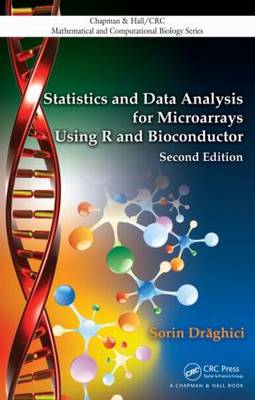Chapman & Hall/CRC Computational Biology
2 total works
Statistics and Data Analysis for Microarrays Using R and Bioconductor
by Sorin Draghici
Richly illustrated in color, Statistics and Data Analysis for Microarrays Using R and Bioconductor, Second Edition provides a clear and rigorous description of powerful analysis techniques and algorithms for mining and interpreting biological information. Omitting tedious details, heavy formalisms, and cryptic notations, the text takes a hands-on, example-based approach that teaches students the basics of R and microarray technology as well as how to choose and apply the proper data analysis tool to specific problems.
New to the Second EditionCompletely updated and double the size of its predecessor, this timely second edition replaces the commercial software with the open source R and Bioconductor environments. Fourteen new chapters cover such topics as the basic mechanisms of the cell, reliability and reproducibility issues in DNA microarrays, basic statistics and linear models in R, experiment design, multiple comparisons, quality control, data pre-processing and normalization, Gene Ontology analysis, pathway analysis, and machine learning techniques. Methods are illustrated with toy examples and real data and the R code for all routines is available on an accompanying downloadable resource.
With all the necessary prerequisites included, this best-selling book guides students from very basic notions to advanced analysis techniques in R and Bioconductor. The first half of the text presents an overview of microarrays and the statistical elements that form the building blocks of any data analysis. The second half introduces the techniques most commonly used in the analysis of microarray data.
Analysis and Interpretation of High-throughput Gene Expression Experiments
by Sorin Draghici
Microarrays allow researchers to simultaneously monitor the expression of thousands of genes. Independent of the platform and analysis methods used, the result of a microarray experiment is a list of differentially expressed genes. Presenting a unified analysis of the field, this book explores the tools available to better understand the underlying biological phenomena of differentially expressed genes. It focuses on two major analytic approaches: 1) ontological profiling and 2) gene interaction networks and known pathways. The author presents the fundamentals and tools for each approach.

